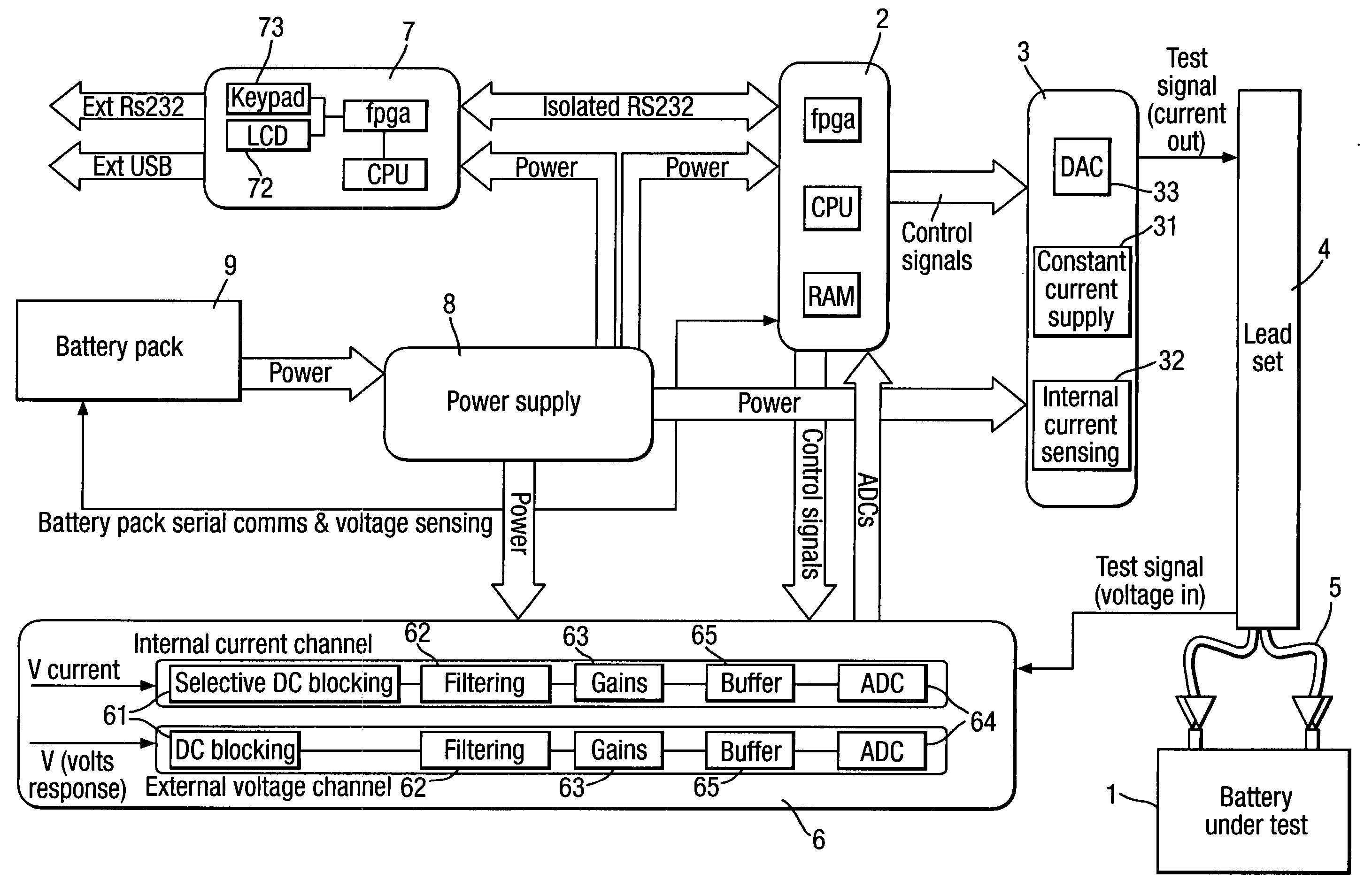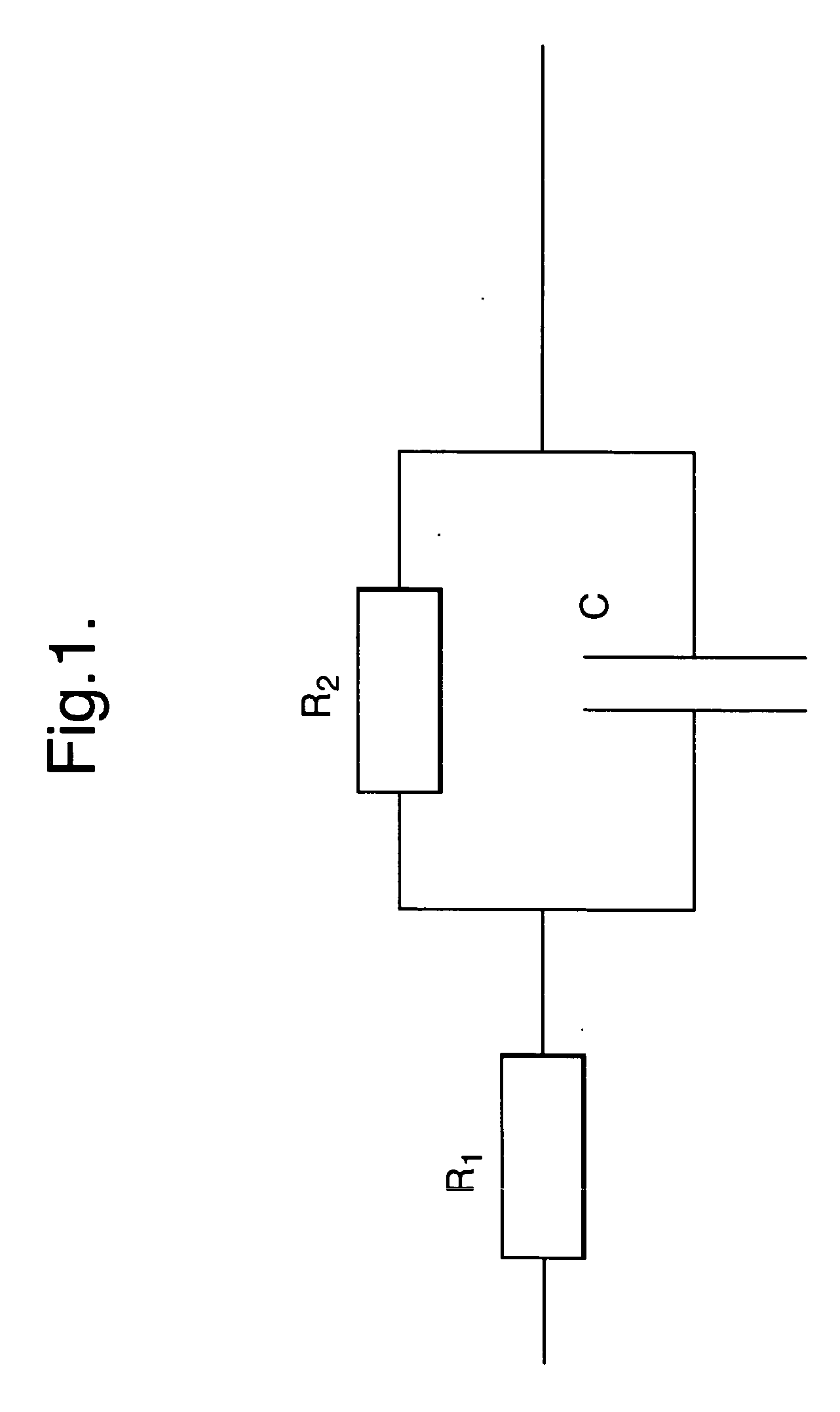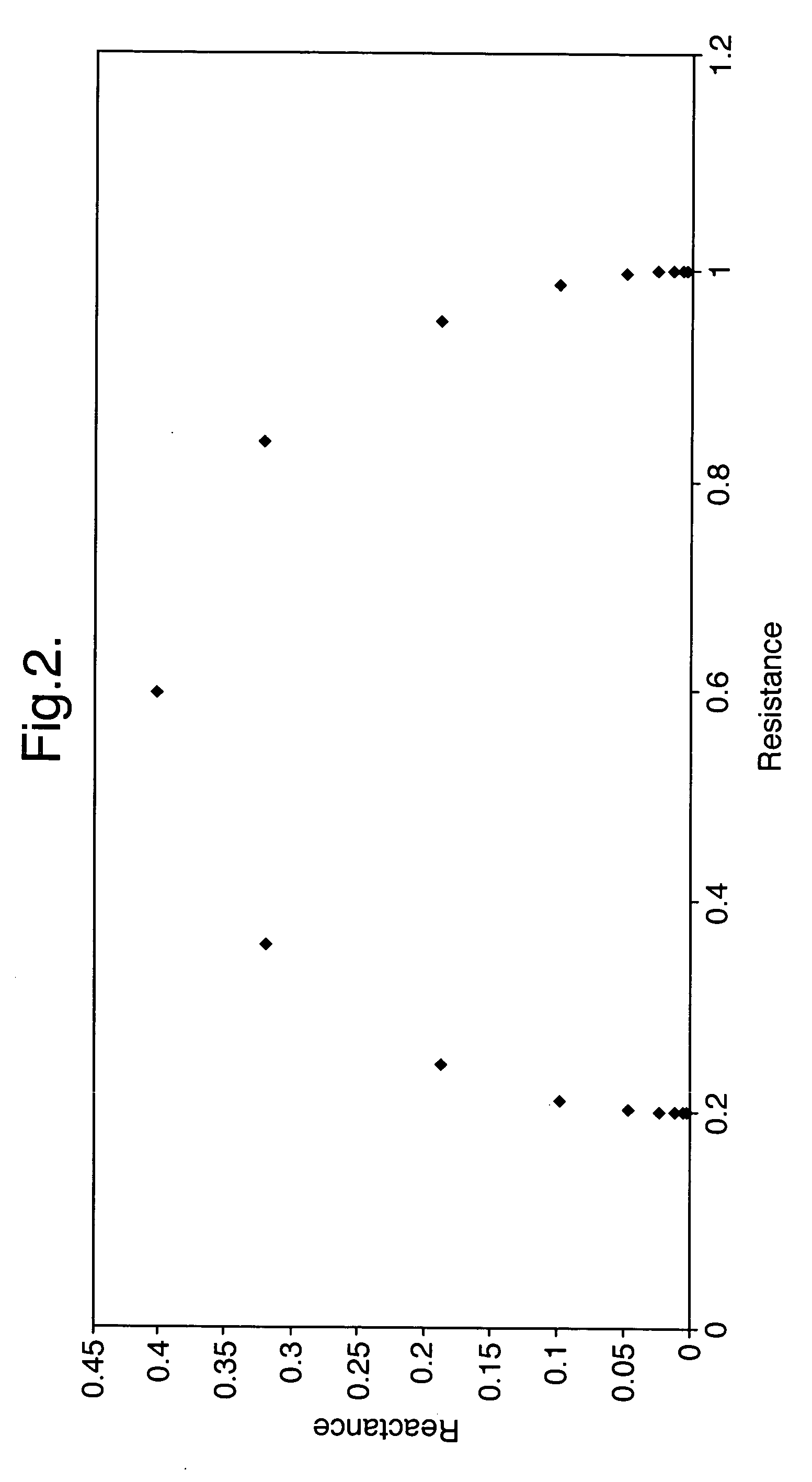Method and apparatus for determining the complex impedance of an electrical component
- Summary
- Abstract
- Description
- Claims
- Application Information
AI Technical Summary
Benefits of technology
Problems solved by technology
Method used
Image
Examples
Embodiment Construction
[0074] The present invention will be described with reference to the Randles equivalent model for the resistive and reactive components of a battery. However, it should be clear that the method and apparatus of the present invention can be applied to any model of a battery or to other electrical components.
[0075]FIG. 1 shows the Randles equivalent circuit for a battery, comprising a first resistor R1 connected in series with a second resistor R2 and a capacitor C connected in parallel. The complex impedance of this circuit is plotted at a number of frequencies in FIG. 2. Each point plotted in FIG. 2 represents a frequency one octave lower than the next when moving from left to right. The plotted points all lie on a semicircle from which it is possible to determine the point of maximum reactance and hence the values of R1, R2 and C. The point of maximum reactance occurs at a resistance of (R1+R2) / 2 and the maximum reactance equals the radius of the circle i.e. R2 / 2. This allows R1 a...
PUM
 Login to View More
Login to View More Abstract
Description
Claims
Application Information
 Login to View More
Login to View More - R&D
- Intellectual Property
- Life Sciences
- Materials
- Tech Scout
- Unparalleled Data Quality
- Higher Quality Content
- 60% Fewer Hallucinations
Browse by: Latest US Patents, China's latest patents, Technical Efficacy Thesaurus, Application Domain, Technology Topic, Popular Technical Reports.
© 2025 PatSnap. All rights reserved.Legal|Privacy policy|Modern Slavery Act Transparency Statement|Sitemap|About US| Contact US: help@patsnap.com



